What is the secret of its work? Features of the heating system in a multi-storey building
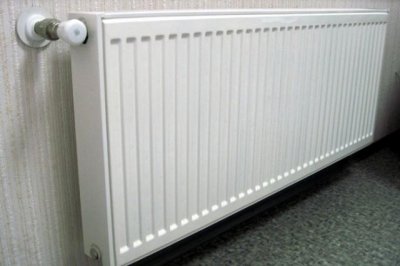
Usually, residents of apartment buildings are not interested in why their apartments are warm.
Questions arise in two cases: the apartment is too cold or hot; you want to change the appearance of the heat sources in the apartment.
Now we will briefly tell you about it, What heating systems for apartment buildings exist?
Types of heating systems in an apartment building
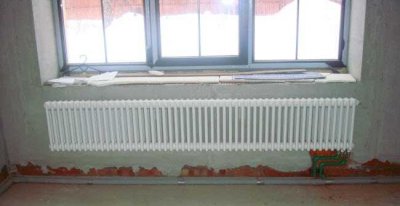
All heating systems are divided according to the following characteristics:
- By location of heat source: centralized and decentralized (per apartment; individual per house).
- According to the characteristics of the coolant: water, steam.
- According to the wiring diagram: single-pipe, "Leningradka", double-pipe, radial.
By location of heat source
Depending on the location of the heat source, there are several types of heating systems in an apartment building.
Apartment-by-apartment
Individual apartment heating system is a mini-boiler room, which is located in every apartment. Basic elements: heating boiler, radiators, smoke removal and air supply equipment. The most affordable type of apartment heating is the one in which the energy source is natural gas.
Advantages:
- You control the temperature level of hot water supply in the heating system.
- The problem of a "two-week vacation" in the summer disappears.
- You save gas by 30-40% and therefore spend less on utility bills.
- The system is environmentally friendly, since the fuel combustion chamber is closed and does not affect the ventilation in the apartment.
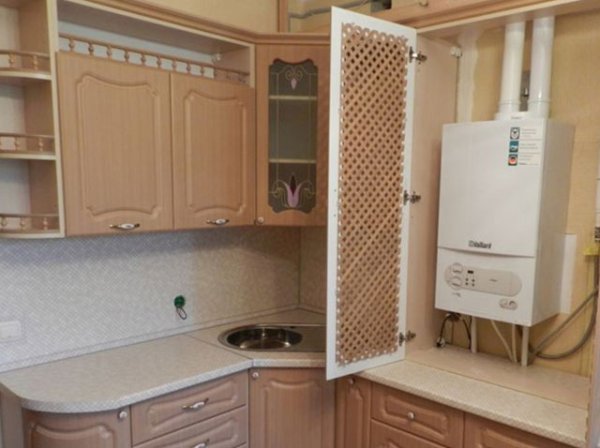
Photo 1. Wall-mounted gas boiler installed in the kitchen of an apartment. The device is hidden in a special cabinet.
Flaws:
- Natural gas is an explosive fuel, so the boiler in each apartment must be equipped with flame control, draft control and temperature sensors.
Individual for one house
Install individual heating in your home — the most convenient and economical solution. Residents themselves control the heating in their apartment and any room accordingly. A comfortable temperature is maintained by a thermostat. It saves electricity and pleases with its microclimate. You don't need to turn on additional heaters when you're cold, and don't open windows if it's too hot.
Central
Elements of central heating: a boiler house or combined heat and power plant that is used to transmit thermal power to residential buildings, a steam turbine (in a combined heat and power plant) produces electrical energy, a network of pipelines.

The main line transports hot water from the boiler room to people's homes.
Pros:
- Reliability backed by the state.
- Eco-friendly equipment inside the building.
- Simplicity (everything is decided for the residents of an apartment building by engineers at heat supply companies).
Cons:
- Seasonality: heating is available only in winter.
- Impossibility of temperature regulation (regulation only by vents and convectors).
- Heat loss due to the length of pipelines.
According to the characteristics of the coolant
According to the characteristics of the heat carrier, there is water and steam heating.
Water
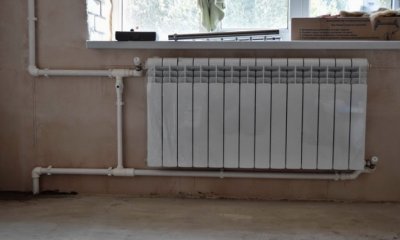
Water heating is the most common type of heat supply system. The system includes:
- Heating boiler.
- Pipelines.
- Radiators.
- Circulation pump.
- Temperature sensors.
- Thermostats.
- Controllers.
Reference. The operating principle is extremely simple. The water that passes through the boiler is heated to the required parameters, is delivered to the required room through pipes. Heat is radiated through pipes and radiators, the water cools and goes back to the boiler.
Advantages:
- Water is the most accessible and inexpensive heat carrier. It absorbs four thousand times more heat than air.
- Since the system is closed, the volume of water does not change after installation and start-up.
- It is possible to regulate the temperature on each radiator. There is no need to ventilate the room.
- The water heating system operates almost silently and does not spread dust compared to air systems.
Flaws:
- Untreated tap water is aggressive for metal elements, as it contains salts and alkalis. A corrosion process occurs, scale is deposited, therefore the liquid flow slows down and the heat transfer coefficient decreases.
- Water can freeze and locally rupture the pipeline. Therefore, it is necessary to add antifreeze to the coolant.
- Installation is complex and costly.
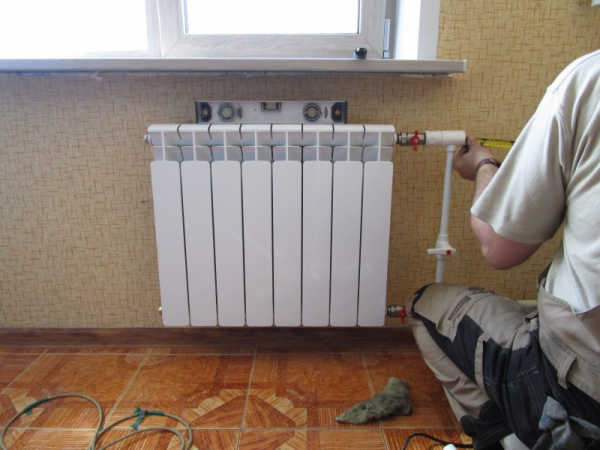
Photo 2. Installing radiators in an apartment. The devices are part of the water heating system.
Steam
The main difference between steam heating and water heating is the heat carrier. It is not water that flows through the pipelines, but steam. In addition, a steam boiler is installed, whose main task is to evaporate the water and obtain steam of the required parameters at the outlet (130—200 °C).
Attention! The steam heating system uses seamless thick-walled steel or copper pipes, cast iron radiators with fins or registers made of pipes (this is a convector-type device).
Advantages:
- Efficient heating. When steam condenses, more heat is released than when heat is released in a water heating system.
- The system is inertial and heats up the room faster.
Flaws:
- Too high a temperature in the system leads to the following consequences: active air circulation in the room; the air becomes too dry; hot elements are dangerous for life, there is a need to close them; it is difficult to select materials for such high temperatures.
- It is difficult to regulate heat output in radiators.
- Noise in the system.
According to the wiring diagram
The types of heating systems for multi-storey buildings also differ in their layout.
Single pipe

The operating principle of a single-pipe heating system is simple.: water moves in a closed circuit from the boiler to the heating radiators. Installation can be vertical or horizontal.
Vertical: connection of heating elements to one vertical riser. This system is suitable for apartment buildings. Horizontal: series connection of radiators with a horizontal riser. The most suitable method for single-story buildings.
Advantages:
- Economical: does not require many materials.
- Easy to install.
Flaws:
- There is no control over individual batteries.
- To repair one element, the entire system must be stopped.
"Leningradka"
Leningradka is recognized as the simplest and most convenient heating system. It is reliable, easy to install and ideal for multi-story buildings. In addition, Leningradka can operate without forced circulation in buildings up to 30 meters in height.
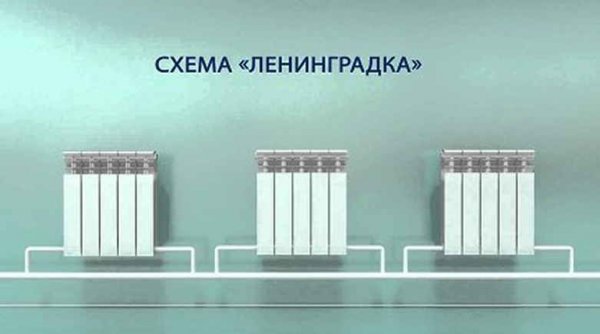
Photo 3. Principles of connecting heating radiators according to the Leningradka scheme. The feed and return are located at the bottom of the batteries.
Advantages:
- Easy to install.
- You choose the battery temperature.
- Just hide the risers.
- Reliable if calculated correctly.
Flaws:
- Uneven heating of the radiator.
- Impossibility of "warm floor".
Double pipe
The diagram of a two-pipe heating system differs from a one-pipe one only in that hot coolant flows through one pipe into the batteries, A the second one collects the cooled water and directs it back into the boiler.
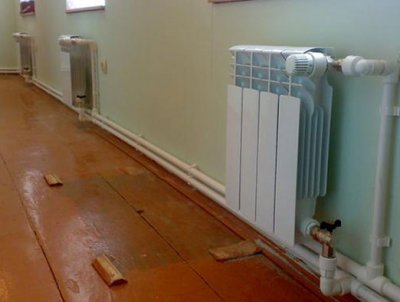
Pros:
- All radiators receive water at the same temperature without any fluctuations.
- A flow regulator can be installed on each battery and this will not affect the overall heat flow.
- It is possible to use fittings of smaller diameter.
- Easy dismantling in case of failure of one radiator.
Cons:
- Expensive installation.
Radiation
The batteries are connected to a collector in the room, from which There is one pipe going to the radiator. The radiators become isolated from the rest of the batteries.
Advantages:
- Quick payback of installation.
- Possibility of regulating the heating temperature.
- The pipes are easily hidden in the floor.
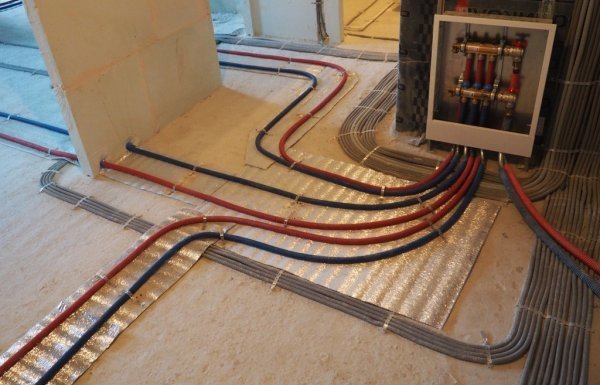
Photo 4. Installation of the heating system in the apartment according to the radial scheme. Red pipes indicate hot coolant, blue - cold.
Flaws:
- A large number of connections and fittings, therefore higher financial costs.
- Frequent breakdowns.
Standards for heating systems in multi-storey buildings
In the heating system of an apartment building, the pressure in the system varies from 6 to 9 atm, the temperature depends on the temperature regime (for example, 150/70, 90/70 and so on). The room temperature should be 18—22 °C.
Useful video
Watch the video, which talks about the features of individual heating of an apartment, its advantages and disadvantages.
Conclusion
As a result, if there is a need to replace a radiator, install a meter or make individual heating for an apartment, you will have to contact specialists and agree with the management company.






